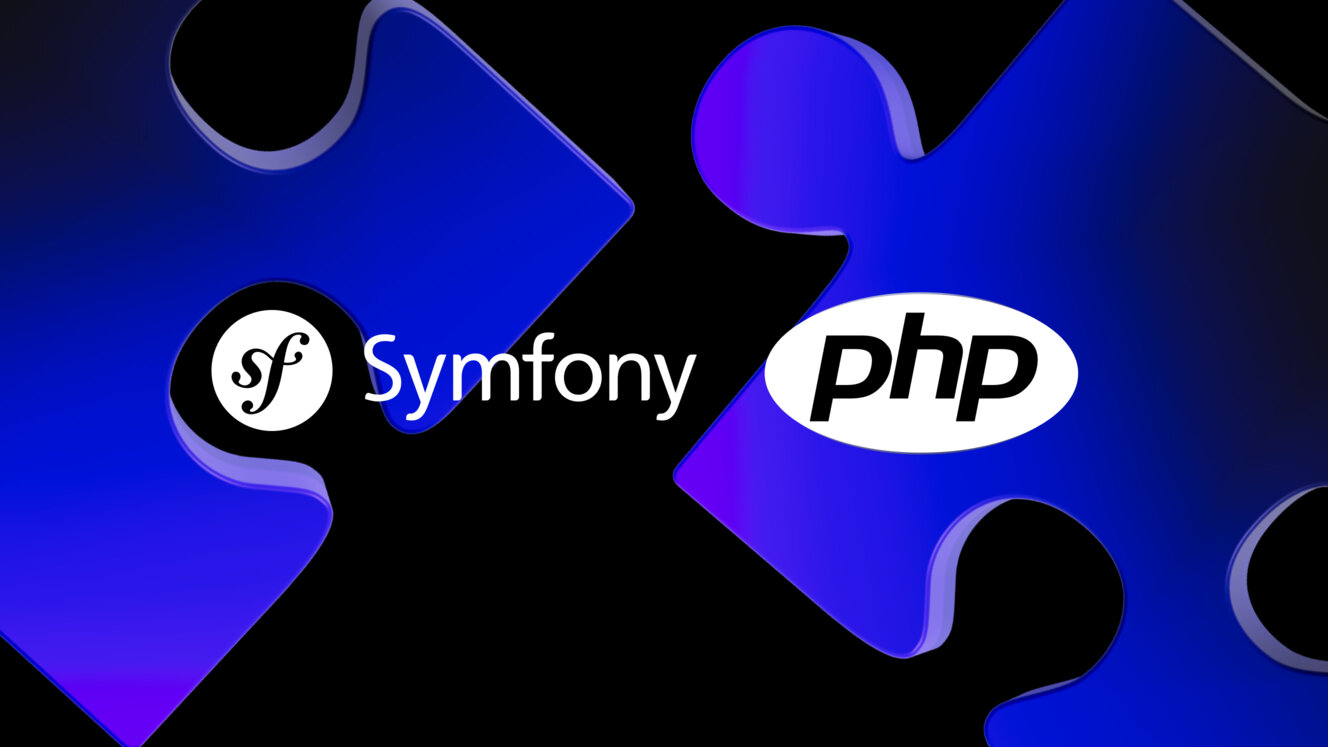
Damian Stalmach
-
Mar 20, 2024
-
10 min read
In the world of backend development, you have to keep in mind which factors are more crucial than others. In this article, we will describe the most significant ones and show you how you can leverage them for your success.
Introduction
The most crucial parts of IT projects are scalable, efficient and flexible backend solutions. With those aspects in mind, you will be one step closer to creating a truly successful project. But that is not all; in order to build scalable solutions, you must know which tools and frameworks to choose. PHP, a server-side scripting language, and Symfony, a high-performance PHP framework, have proven themselves to be great tools for developing advanced backend solutions, so it’s good to keep them in mind. Now that we know which tools and frameworks are a good choice for your project, we can start exploring the collaborative capabilities of PHP and Symfony. In this article, we will focus on how they facilitate the implementation of advanced architectural patterns such as Command Query Responsibility Segregation (CQRS) and Domain-Driven Design (DDD) for creating robust applications.
PHP: Web Development Backbone
As for web development, PHP has been a true stalwart, providing the backbone for a myriad of dynamic websites and applications. What makes it an exceptional choice for backend development is its versatility, ease of use, and vast ecosystem of libraries and frameworks. What is even more, PHP has undergone significant performance improvements with the advent of the 7th and subsequent versions. The language, now that the improvements have been made, ensures that it remains competitive in the ever-demanding world of backend processing.
The goal of staying competitive is the driving force for PHP’s development ecosystem, which is characterized by continuous improvements and updates. The language undergoes regular enhancements, addressing performance issues, introducing new features, and ensuring compatibility with the latest web standards. This dynamic evolution would not have ever happened without the commitment of the PHP community, which is trying to keep the language modern and relevant.
Symfony: Empowering PHP for Advanced Applications
Symfony is a widely used PHP framework that can be effectively utilized to create backends of any complexity, irrespective of the project type or architecture. The framework is highly regarded for its emphasis on best practices and adherence to design principles, which makes it a preferred choice for developing professional-grade applications.
One of the most significant advantages of using Symfony is its modular architecture and component-based development approach, which simplifies the process of creating maintainable and scalable codebases. With a plethora of built-in features and functionalities, Symfony provides developers with the flexibility and freedom to create custom solutions that are tailored to meet the specific needs of their projects.
CQRS: Enhancing Read-Write Separation
Let’s start by briefly explaining the Command Query Responsibility Segregation (CQRS). It is an architectural pattern that advocates for the separation of the read-and-write operations of a system. With its flexibility and extensibility, Symfony allows developers to implement CQRS seamlessly. Moreover, by dividing the application into distinct commands and query sides, developers can optimize each for their specific requirements.
The Symfony framework allows for easy implementation of commands and queries using Command and Query Handlers. This separation of concerns improves code modularity and enables independent scaling of read and write components. As a result, it leads to better performance and maintainability of the application.
DDD: Effective business modeling
Domain-Driven Design (DDD) is a set of principles and patterns that help to create a shared understanding of complex problem domains. Symfony, a popular PHP web application framework, is well-aligned with DDD principles due to its emphasis on convention over configuration. This makes it an ideal choice for developing applications that require a strong focus on the domain.
Symfony's flexible architecture, support for bundles, services, and dependency injection enable developers to model and encapsulate domain logic effectively. Developers can define aggregates, entities, and value objects within the Symfony application context to create a clear and expressive representation of the business domain. With Symfony, developers can build applications that are easy to maintain, extend, and scale.
All Together: A Symfony-Powered CQRS and DDD
Let's imagine a hypothetical scenario to explain how Symfony can be used to integrate CQRS (Command Query Responsibility Separation) and DDD (Domain-Driven Design) in an e-commerce platform. This platform can be complex, where users can place orders, view products, and track their shipments.
Command Side (Write)
Symfony's command handlers can be utilized to process commands like "CreateCartCommand" and update the underlying domain model accordingly. This ensures that the writing side of the application remains focused on executing business logic without being burdened by read concerns.
Query Side (Read)
Symfony's controllers and query handlers can be employed to retrieve and present information to users efficiently. For instance, a dedicated query handler could handle a " GetCartQuery " to fetch and display cart details.
Domain Model (DDD)
Symfony's service container and dependency injection support allow for the effective organization of domain entities, aggregates, services, and events. The rich set of Symfony components can also be used to handle aspects such as validation, event sourcing, and persistence, aligning with DDD principles.
By integrating CQRS and DDD into the Symfony-powered application, developers can achieve a separation of concerns that promotes code maintainability, scalability, and testability.
Summary
Utilising PHP and Symfony's capabilities can help you, as a backend developer, create robust and adaptable applications. PHP's versatility, combined with Symfony's architectural excellence, provides the ability to integrate advanced patterns such as CQRS and DDD effortlessly. And that's one of the most crucial aspects for any developer.
Going further, embracing these technologies allows for creating maintainable and extensible codebases that meet the demands of complex business applications. Whether you're starting a new project or improving an existing one, consider the synergy of PHP and Symfony, which is a powerful force that can take your applications to entirely new levels of efficiency and scalability, which, as we already mentioned, are one of the most significant aspects when it comes to creating a successful IT project.








